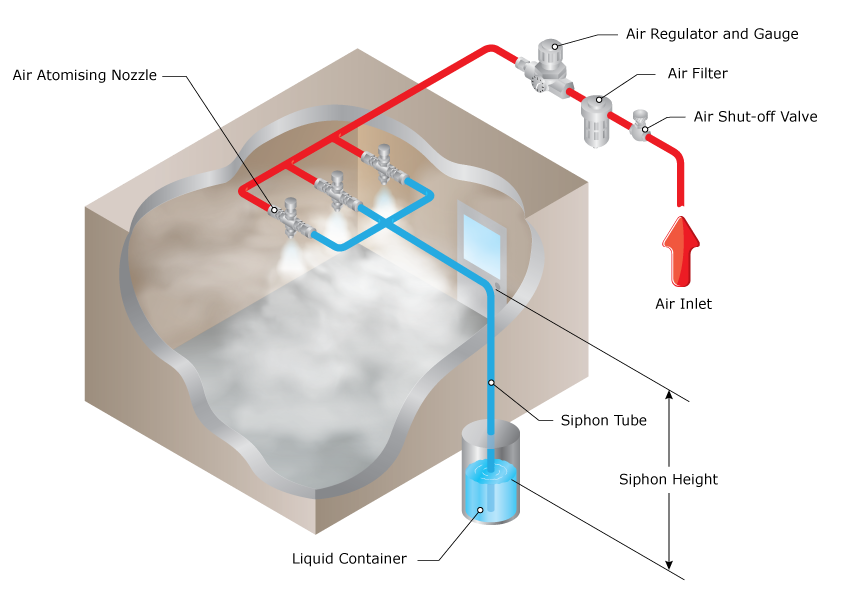Call us on +44(0) 1273 400 092
Call us on +44(0) 1273 400 092
The full cone or hollow cone pattern produced by many nozzles will break down into a fog/mist after a certain distance from the orifice. If a cone pattern is desired then this breakdown into a true mist is not desirable. But for some applications,
the breakdown of the spray into a true homogenous fog is the required result. As such, there are a number of nozzles that are designed to specifically produce this effect.
A mist pattern is characterised by having a low flow rate of very small droplet sizes with almost no impact. Typically this pattern will be used for evaporative cooling, moistening or humidifying applications.
Whether a given discharge is classified as a fog, mist or a spray depends up on the mean droplet size.
Dry fogs will have Sauter mean droplet sizes of between 10-20 microns
Wet fogs will have Sauter mean droplet sizes of between 20 and 30 microns
Mists with have Sauter mean droplet sizes of between 30 and 60 microns
Anything above 60 microns would be spray.
A hydraulic nozzle will produce finer and finer droplets as liquid pressure is raised. So a nozzle that produces a mist at 5 bar pressure may well produce a fog spraying at 15 bar pressure. This means the term fog nozzle and misting nozzle
are generally interchangeable as the same nozzle may well be able to produce both a mist or a fog depending on the operating pressure.
There are three common designs of hydraulic misting nozzle:
Small orifice misting nozzles operate by forcing fluid through a very small orifice. The sheering forces break the fluid into fine droplets.
Impingement misting nozzles operate impacting the fluid on a pin just underneath the exit orifice. This breaks
the liquid into very fine droplets.


Small Orifice Misting Nozzle Impingement Misting Nozzle
Spiral misting nozzles operate by impacting the fluid on a helix
shape. This shatters the liquid into a mist or fog.
Axial whirl hollow cone nozzles operating at higher pressures can also be used to make a mist
Further to this air atomising nozzles are also commonly used for mist and fog generation. These pneumatic nozzles use compressed air to break apart the fluid being sprayed allowing for very fine atomisation even at low fluid pressures. Air atomising nozzles can produce a variety of different initial spray patterns but due to the fine droplet size at a certain distance from the nozzle these will form fogs or mists.

Detailed information on the features and benefits of each design can be found by following the links in the blue menu box to the right hand side of this page.